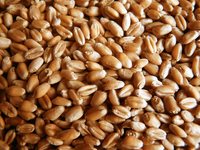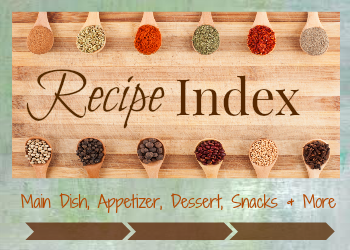I love to play around with the variety of ancient grains that are everywhere—from recipes, to Panera Bread Company’s menu, to store shelves, etc. I (Litsa) love whole grain breads and have enjoyed salads with wheat berries and quinoa. Knowing how they taste and how to cook them (or with what) is key to getting them wedged into my weekly menu plan. This cheat sheet from Redbook Magazine will help us both get started:
Wheat Berries: “These berries are really hearty—super chewy with an earthy wheaty flavor. Serve a stew over them or add some to a chili for texture. You can also make a batch and eat them for breakfast with cold milk, cinnamon and fruit.” However, don’t forget that you can add them to a green salad too.
Millet: “This Asian grain has a mild flavor, almost like corn, and cooks up fast. It’s great in saucy dishes, so swap it in for rice or couscous at dinnertime. Or try it for dessert. Simmer millet in whatever kind of milk you prefer. Add honey or sweet spices to turn it into a yummy and nutritious pudding.”
Farro: “This grain has become popular because it’s incredibly versatile. Like wheat berries, farro is also chewy, but it’s slightly sweet and has a creamy texture. It works in salads as a side dish, or to soak up a sauce. One of the coolest things to do with farro is to use it instead of rice in a risotto—use the same amount of farro as you would rice. In Italy, the dish is called farrotto.”
Quinoa: “It comes in a few varieties (red, white, etc.) and they all taste slightly nutty. Unless the kind you buy says it has been pre-rinsed, it’s important to rinse quinoa before cooking to eliminate the slightly bitter flavor of the outer shell.”
Cracked Freekeh: “Because this green wheat is lightly roasted after it’s harvested, it has a uniquely rich, almost smoky essence. Originally cultivated in North Africa and the Middle East, it tastes great with the flavors you’ll find in that cuisine: mint, parsley, tomatoes, cucumbers, coriander, and cumin. It’s also amazing as a side for red meat.”
Now that we know more about these whole grains, how do we cook them? “All you need is a pot and some liquid, water or stock. For millet, farro, quinoa, and freekeh, add the grains and salted water or broth to a pot & bring it to a boil. Lower to a simmer, cover, and cook until tender but still chewy. Remove from heat and let sit, covered, for 10 minutes to absorb any additional liquid. Because wheat berries are so sturdy, they require a different method: Bring a pot of broth or salted water to a boil, add the wheat berries, rapidly simmer until cooked, then drain.”
Liquid Number Ratio(s) to Grains:
1 cup wheat berries + 4 cups (or more) liquid +50 minutes=3 cups cooked
1 cup millet =1 3/4 cups liquid + 15-20 minutes = 4 cups cooked
1 cup farro + 1 3/4 cups liquid + 20-25 minutes = 3 cups cooked
1 cup quinoa + 1 3/4 cups liquid + 10-20 minutes = 3 1/2 cups cooked
1 cup cracked freekeh + 2 1/2 cups liquid + 15-20 minutes = 3 cups cooked
Now, which grain will you (and I) begin adding to our menu this season?
Credit to Grain Notations: Redbook Magazine August 2015 issue & Simply Ancient Grains (adaptations as noted on Redbook page 122)
Latest posts by Litsa @How to Have it All (see all)
- Mushrooms: Portobello, Morels, & More - April 25, 2016
- Giving Back: Get Involved - December 2, 2015
- The Autumn Advantage - December 1, 2015









